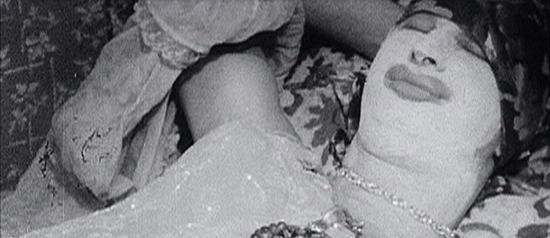
Daniel Champion
One theme that seems to have come up consistently throughout this semester, is the idea that the avant-garde film makes the viewer aware of the medium of film itself. This quality can make a film like Stan Brakhage’s material inspired “Mothlight” modern under Greenberg’s definition of modern art that we looked at in the reading “Modern Painting.” A realist painting tries to seduce the viewer into giving in to the illusion of the scene while a work of modern art is fully aware of it’s position as an object in a gallery. In his article for Film Comment “Bad Movies”, J. Hoberman takes on this abstract push and pull between the modern and the classic view of art and puts these ideas into the context of mainstream film in the 20th Century.
With film, it seems, the relationship between art and reality becomes slightly more confusing than it is with painting for example, due to the nature of the medium. With painting the original goal was to capture reality and try to render three dimensional objects on a two dimensional surface. A film camera however, is always capturing some piece of reality, no matter what it is pointed at. For many commercial films today, the film maker’s goal is also to capture a piece of reality, but one that is not the actual reality of the people the camera is pointed at and is instead a fictional space that is created when the people in front of the camera pretend to exist in that fictional space.
In his article Hoberman finds something modern and “poignant” in movies that have been dubbed as “bad movies”. The typical movie goer wants to be seduced by the fictitious space they are used to movies creating and because of this films are often dismissed as “bad” when the illusion is broken. Hoberman introduces the idea that illusion breaking qualities like an unconvincing performance by an actor brings in an intriguing element of documentary that should not be dismissed. He describes the bad actress Maria Montez and how her “transparent role playing” can be more authentic than an actress that is being fake in a convincing way. He describes the films of Ed Wood and how often the audience can see the bulbs that are lighting the scenes of the film. In this way to some the director has failed but this can be seen as a reference to the process and the act of the shooting actors on a set which is a quality that gives this work an unintentional modernity and sense of truth that successful mainstream films can lack.
In his film Blonde Cobra, Ken Jacobs deals with these same concepts of the modern, the commercial, and the documentary only in his case it is intentionally. The film, pieced together by Jacobs, is made up entirely of clips filmed for two failed failed projects of Bob Fleischer and Jack Smith. Though there are multiple instances in which the unnamed voice that dominates the soundtrack tells a story, the overall video has no discernable narrative and uses no established editing techniques to try to connect with the audience. Instead, it’s seems to me that the subject matter becomes the failure of the narrative and the film ends up reading more like a poetic documentary about these men trying to make a film, rather than anything that can be seen as a narrative or even fictional film. The reality the film finds is not in some artistically rendered fictitious space conceived by the makers, although that may have been what they originally had in mind. The reality that this final film created by Ken Jacobs shows what is even more real than any fictitious space could ever be. It is a space that was created through his focus on the failures of these projects and those failures’ ability to bring out the documentary like truth identified by Hoberman in movies that are labeled as “bad movies”.
Though as an editor Ken Jacobs is doing all he can to take the film away from the tropes and language of narrative hollywood films, more complex meaning can reveal itself in smith and fleischer’s attempt to make something that references or parodies commercial film. We see scenes in which men are dressed as women that could be commenting on sexuality and the representation of fringe groups in hollywood film. Other scenes pair white men wearing strange hats with music that you might find in a hollywood film representing a culture thought of as “exotic” in a western society. We see the smiling Jack Smith holding a thoughtlessly composed piece of paper that looks like a frame of a credits sequence with his name on it. All of these shots coming out of a film composed of failures could be seen as a list of failures of mainstream and uninventive film.
Questions???
- How can the amount of skill going into a film as perceived by the audience change the way we look at that film? Can we see it as both positive and negative? Is the way we view this productive?